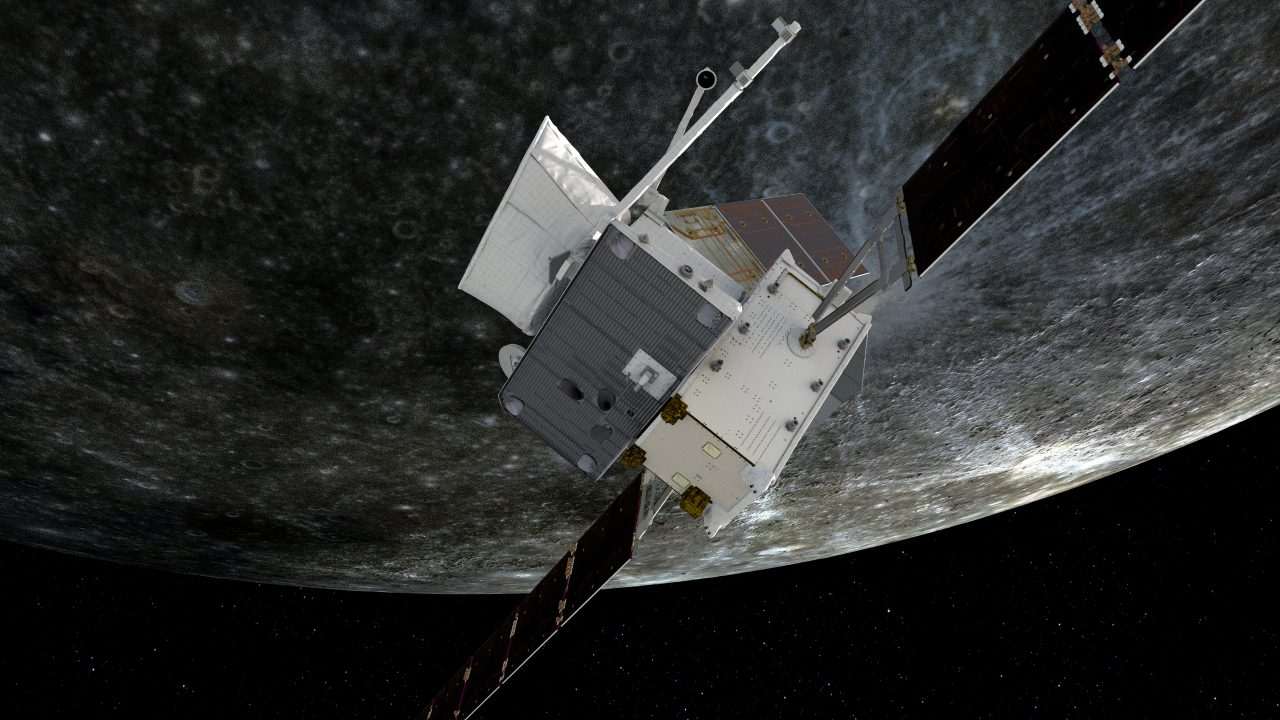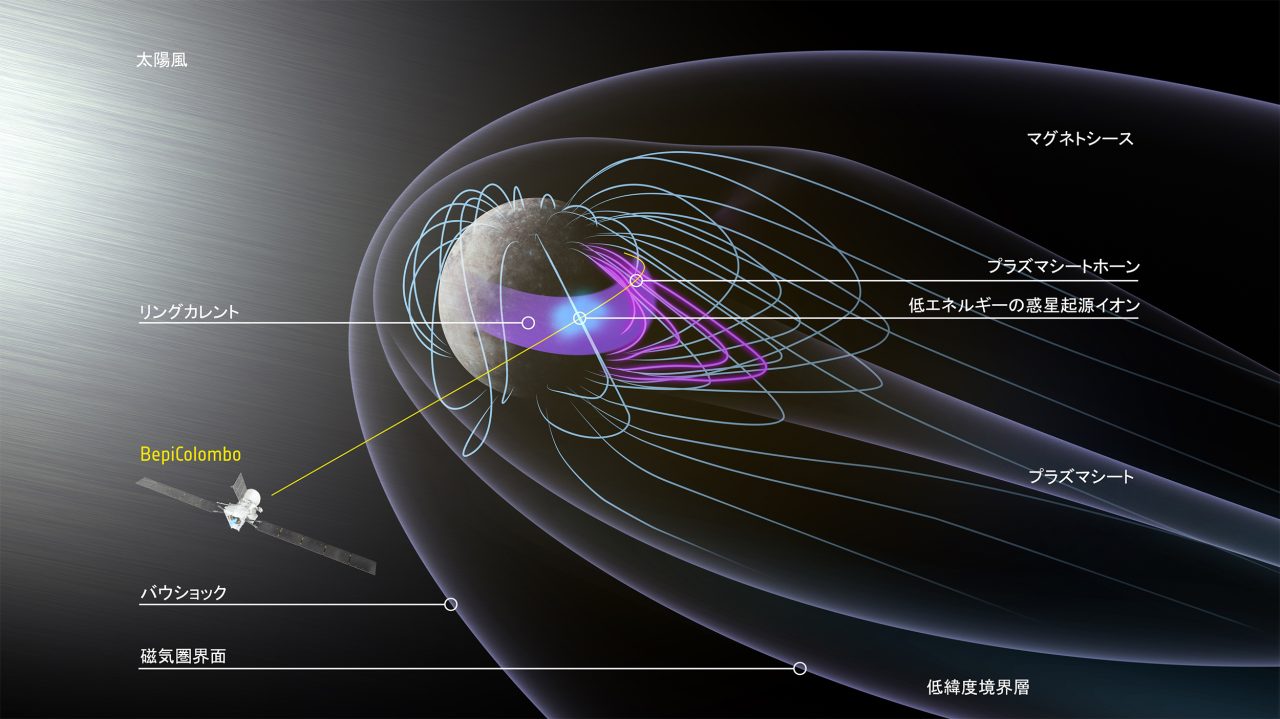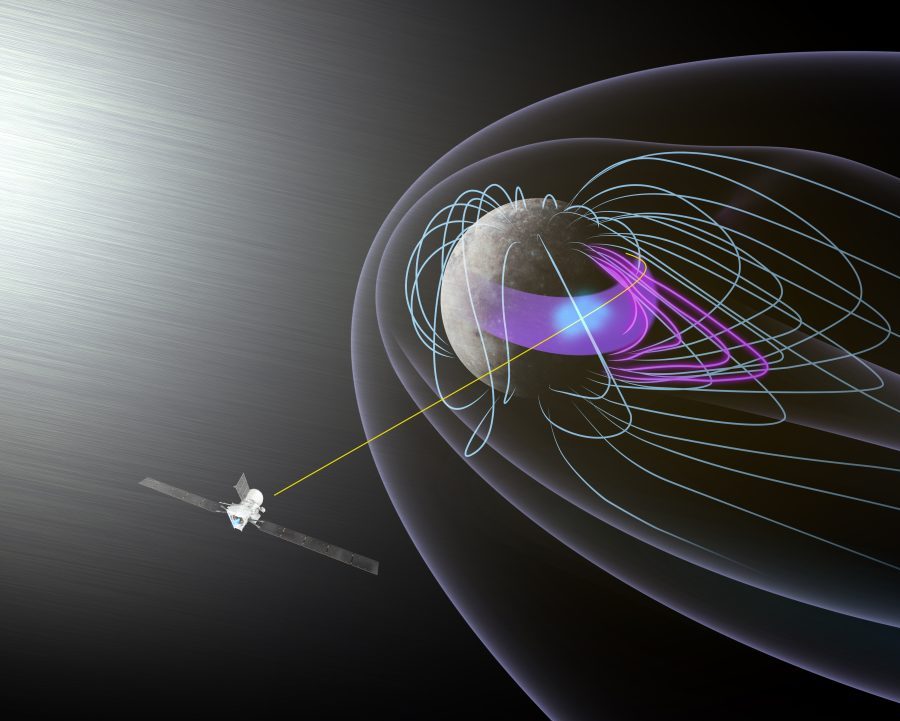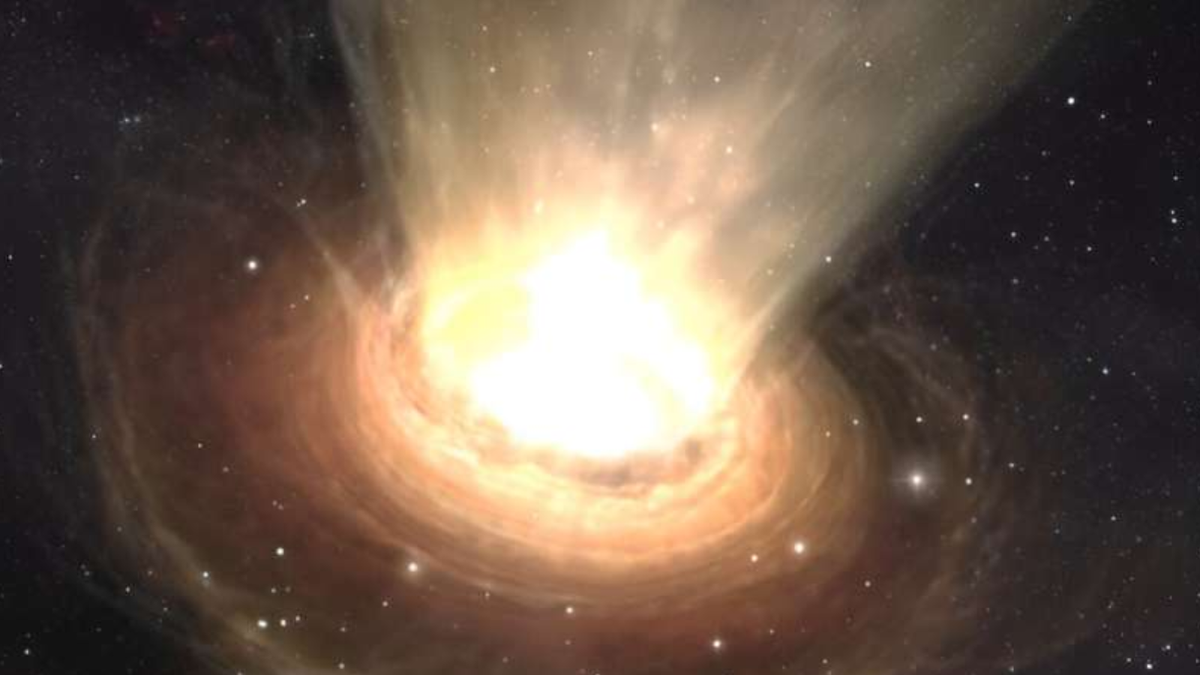The Japan Aerospace Exploration Agency (JAXA) and the European Space Agency (ESA) announced on October 3, 2024, that the Mercury exploration spacecraft “BepiColombo” (BepiColombo, BepiColombo) will conduct the third swing of Mercury. Research results of a research team led by Lina Hadid from the Plasma Physics Laboratory (LPP) at the Paris Observatory, which analyzed the observation data.
BepiColombo is a joint Japan-Europe mission to explore Mercury involving two spacecraft: the European Mercury Planetary Orbiter (MPO) and the Japanese Mercury Magnetospheric Orbiter (MMO, MIO). The European electric propulsion unit, the Mercury Transfer Module (MTM), has been added, which is responsible for the flight of both spacecraft until they enter orbit around Mercury, and the three spacecraft are currently flying in a vertical stack.

This mission involved a total of nine swings by Earth, Venus, and Mercury to place the spacecraft into orbit around Mercury.(*Method of changing orbit using the gravity of planets orbiting the sun)Implementation is planned. The third swing of Mercury, the sixth in total, took place on June 20, 2023, Japan time, and the BepiColombo spacecraft entered Mercury from the evening side to the night side, and approached a distance of approximately 235 kilometers from the surface.
The research team combined observational data from Mio's Plasma Particle Observer (MPPE) instrument obtained during the third oscillation with numerical simulations of plasma particles to determine the origin of the observed plasma and found it to be located within Mercury's magnetosphere.
According to the Japan Aerospace Exploration Agency, the previously predicted lower latitude boundary layer in the first half of the oscillation(*The boundary between the region where the solar wind flows freely and the magnetosphere)However, particles with a wider range of energies were observed than expected based on observational data from NASA's Mercury probe MESSENGER.
Later, high-energy ions were observed trapped in Mercury's magnetosphere near Mercury's equatorial plane and at low latitudes, but this may be due to a partial or complete loop current.(*A loop current is an electric current created by charged particles trapped in the magnetosphere. It is known to exist on Earth tens of thousands of kilometers from the surface.)It is believed that this may be the case. Mercury's magnetosphere is small compared to the size of the planet, and it is not yet clear how particles continue to be captured a few hundred kilometers from the surface. MPO and Mio will conduct observations after entering Mercury's orbit that will lead to more knowledge.


In addition, during Mercury's third oscillation, planetary ions, which are the subject of observation by an ion mass spectrometer (MSA) consisting of MPPE, will(*Neutral, ionized particles emitted from the surface of the planet as a result of collisions with micrometeorites or interaction with the solar wind)Observations were also made. Observing planetary ions is synonymous with studying the relationship between a planet's surface and plasma environment, so there are high expectations for future observations.
The BepiColombo spacecraft made its fourth swing around Mercury on September 5, 2024 Japan time, coming within about 165 km of Mercury's surface, closer than it was a year ago. From now on, Mercury's fifth swing is scheduled to take place in December 2024, Mercury's sixth swing in January 2025, and its insertion into Mercury's orbit in November 2026. After arriving at Mercury, cooperative observations between MIO and MPO are planned, as well as solar exploration projects such as NASA's Parker Solar Probe and ESA's Solar Orbiter. Collaborative observations with spacecraft are also under consideration, JAXA says, and are expected to enhance exploration of the heliospheric system that broadly links observations of the heliosphere, planetary fields, and planetary magnetospheres.
source
- Japan Aerospace Exploration Agency/ISAS – We understood the aspects of Mercury's magnetosphere! ~Mercury's BepiColombo “Mio” wobble reveals Mercury's magnetospheric plasma environment~
- European Space Agency – Mercury's magnetic landscape was mapped in 30 minutes
- Hadid et al. – Mercury's plasma environment after the third flyby of BepiColombo (communications physics)
Editorial/Editing/Suray Department
#JAXA #PepeColombo #ISA

“Travel maven. Beer expert. Subtly charming alcohol fan. Internet junkie. Avid bacon scholar.”




![[مرة واحدة في السنة! ]A special Tsukuba Space Center open house will be held on October 26 (Saturday), and some facilities can only be accessed on this day | Sorae portal site to space](https://sorae.info/wp-content/uploads/2024/10/2024-10-04-spacemedia-HII-Tsukuba.jpg)
More Stories
[مرة واحدة في السنة! ]A special Tsukuba Space Center open house will be held on October 26 (Saturday), and some facilities can only be accessed on this day | Sorae portal site to space
ULA launches the new “Vulcan” rocket No. 2, the Space Portal website
Introducing Ray-Ban® Change, whose frame changes color based on sunlight! – Japanese nylon